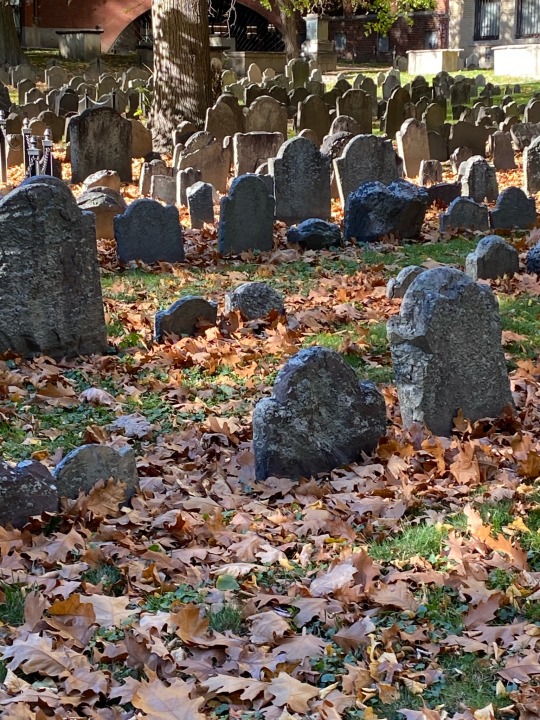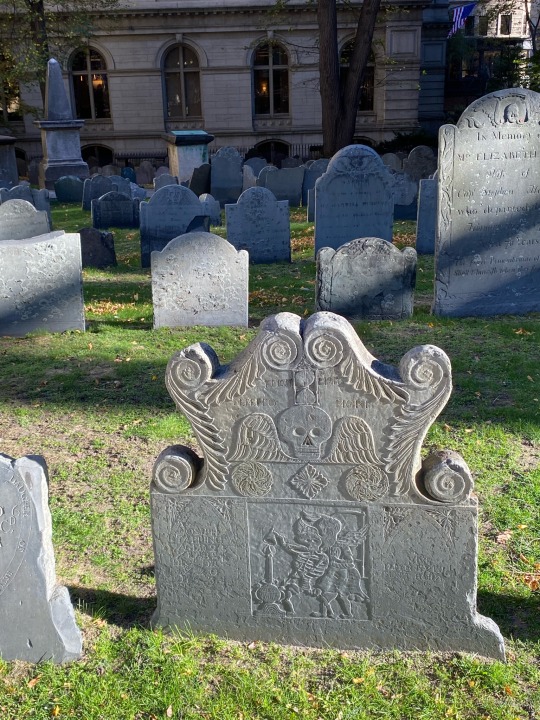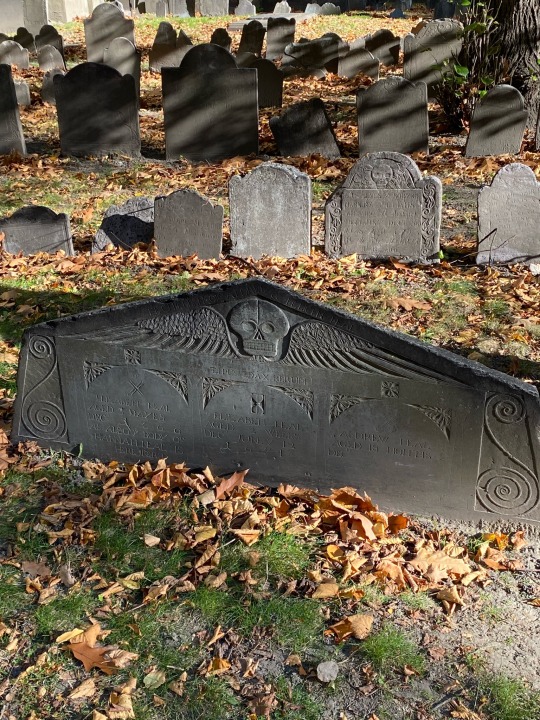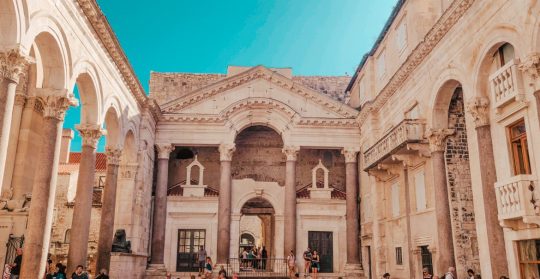#I got pictures of the tombs of Paul Revere
Text





#few favorite things#left in the dark#death tw#these are three cemeteries along the freedom trail#granary burying ground#kings chapel burying ground#and copps hill burying ground#I got pictures of the tombs of Paul Revere#Jonn Hancock#and Benjamin Franklin’s parents#but I wanted to space some pics out
0 notes
Text
Peristyle Driver

July 15, 2020 - The 66th Split Summer Festival was officially opened on Tuesday evening at Peristyle with Verdi's opera I Lombardi alla Prima Crociata. This year's edition, respecting all epidemiological measures, brings art back to the ancient stages under the starry night sky.
Peristyle Driver Job
Peristyle Driver Jobs
Peristyle Driver Download
Peristyle Drivers
Reconstruction of a Roman peristylum (peristyle) surrounding a peristylium (courtyard) of Pompeii
Split's center at Peristyle within Diocletian's Palace.
The Peristyle was, quite literally, built for parties – parties with dancing, to be exact. In 1907, architect Paul Andry created this neo-classical open-air pavilion with a colonnade, and the structure has been lovingly maintained over the years through several renovation projects, including one by the generous donation of Mea and Vincent Saia in 1989 and the most recent, in 2012.
Welcome and thanks for checking out the Peristyle Podcast, our internet radio show covering the USC Trojan football team.Every week host Ryan Abraham brings you multiple Trojan podcasts, with a variety of guests and opinions talking about football, basketball, recruiting and more!
In the Peristyle, John William Waterhouse (1849–1917). Rochdale Art Gallery, Rochdale, England.
Ceiling decoration in the peristyle hall of the Medinet Habu
In Hellenistic Greek(1) and Roman architecture,(2) a peristyle (/ˈpɛrɪstaɪl/; from Greekπερίστυλον)(3)(4) is a continuous porch formed by a row of columns surrounding the perimeter of building or a courtyard. Tetrastoön (τετράστῳον or τετράστοον, 'four arcades')(5) is a rarely used archaic term for this feature.(6) The peristyle in a Greek temple is a peristasis (περίστασις).(7) In the Christian ecclesiastical architecture that developed from the Roman basilica, a courtyard peristyle and its garden came to be known as a cloister.
Etymology(edit)
The Greek word περίστυλον perístylon is composed of περί peri, 'around' or 'surrounded', and στῦλος stylos, 'column' or 'pillar', together meaning 'surrounded by columns/pillars'. It was Latinised into peristylium.
In Roman architecture(edit)
In rural settings, a wealthy Roman could surround a villa with terraced gardens; within the city, Romans created their gardens inside the domus. The peristylium was an open courtyard within the house; the columns or square pillars surrounding the garden supported a shady roofed portico whose inner walls were often embellished with elaborate wall paintings of landscapes and trompe-l'œil architecture. Sometimes the lararium, a shrine for the Lares, the gods of the household, was located in this portico, or it might be found in the atrium. The courtyard might contain flowers and shrubs, fountains, benches, sculptures and even fish ponds.(8) Romans devoted as large a space to the peristyle as site constraints permitted; even in the grandest development of the urban peristyle house, as it evolved in Roman North Africa, often one range of the portico was eliminated, for a larger open space.(9)
The end of the Roman domus is one mark of the extinction of late antiquity (the Late Classical culture): 'the disappearance of the Roman peristyle house marks the end of the ancient world and its way of life,' remarked Simon P. Ellis.(10) 'No new peristyle houses were built after A.D. 550.' Noting that as houses and villas were increasingly abandoned in the fifth century, a few palatial structures were expanded and enriched, as power and classical culture became concentrated in a narrowing class, and public life withdrew to the basilica, or audience chamber, of the magnate. In the Eastern Roman empire, late antiquity lingered longer: Ellis identified the latest-known peristyle house built from scratch as the House of the Falconer at Argos, dating from the style of its floor mosaics about 530–550.(11) Existing houses were subdivided in many cases, to accommodate a larger and less elite population in a warren of small spaces, and columned porticoes were enclosed in small cubicles, as at the House of Hesychius at Cyrene.(12)
Other uses(edit)
Although ancient Egyptian architecture predates Greek and Roman architecture, historians frequently use the Greek term peristyle to describe similar, earlier structures in ancient Egyptian palace architecture and in Levantine houses known as liwan houses.
See also(edit)
Notes(edit)
^J.A. Dickmann. 'The peristyle and the transformation of domestic space in Hellenistic Pompeii', Journal of Roman Archeology 1997.
^A. Frazer, 'Modes of European Courtyard Design before the Medieval Cloister' Gesta, 1973; K.E. Meyer, 'Axial peristyle houses in the western empire,' Journal of Roman Archaeology, 1999; S. Hales, The Roman House and Social Identity 2003.
^Harper, Douglas. 'peristyle'. Online Etymology Dictionary.
^περίστυλον. Liddell, Henry George; Scott, Robert; A Greek–English Lexicon at the Perseus Project.
^τετράστοον in Liddell and Scott.
^'Tetrastoön' . Encyclopædia Britannica. 26 (11th ed.). 1911. p. 671.
^περίστασις in Liddell and Scott.
^E.B. MacDougall, W.M.F. Jashemski, eds., Ancient Roman Gardens: Dumbarton Oaks Colloquium on the History of Landscape Architecture, 1979.
^Yvon Thébert, 'Private life and domestic architecture in Roman Africa', in Paul Veyne, ed. A History of Private Life, I: From Pagan Rome to Byzantium (1985, Arthur Goldhammer, tr., 1987) esp. 'The peristyle', pp 357-64.
^Simon P. Ellis, 'The End of the Roman House' American Journal of Archaeology92.4 (October 1988:565-576) opened the article's abstract with these words.
^Ellis notes G. Akerström-Hougen, The Calendar and Hunting Mosaics of the Falconer in Argos, Stockholm, 1974; a somewhat later peristyle house, at Hermione in the Peloponnesus, of the end of the 6th century, was not initiated at this late date but a partial reconstruction of an earlier elite dwelling (Ellis 1988:565).
^Noted by Ellis p. 567.
External links(edit)
Media related to Peristylia at Wikimedia Commons
Barbara McManus, 'The Peristylium': a reconstruction of a peristyle
Retrieved from 'https://en.wikipedia.org/w/index.php?title=Peristyle&oldid=1004883254'
From The VODOU Page (http://members.aol.com/racine125/index1.html)
The ancestors, zanset yo in Haitian Creole, are ever with a Vodouisant. He/she lives, breathes and acts with the awareness of their presence. The national anthem of Haiti begins, 'For the country, and for the ancestors, we walk united..'.
In the countryside of Haiti, each family compound includes a family graveyard. The tombs of family members are as elaborate as the family can afford. Some resemble small houses built above ground, with the crypt below. The structures built for wealthy families may even comprise a small sitting room, complete with a picture of the deceased and good quality chairs. When a newcomer enters the family compound for an extended visit, courtesy requires that her or she make a small libation of water at the tombs, so that the ancestors will welcome the person. Family members and guests may also, at any time, make an 'illumination'. Candles or beeswax tapers are lighted, placed on the tombs, and a short prayer is said.
In the city, the law requires burial in the city graveyard. Again, structures may be quite elaborate, and large padlocks and other security devices are used to prevent graverobbers from making off with the metal coffin findings, bones, or other articles of the dead person.

The bones of dead individuals are considered to have great magical powers, particularly if the dead person was a Houngan, Mambo, or in any other way notable or distinguished, for good or ill.
Peristyle Driver Job
A Vodouisant is buried with Roman Catholic ceremony, and a wake is held for nine nights after the death. The ninth night is called the denye priye, the last prayer. After the last prayer, the Catholic part of the death ritual is closed.
At some point either before or after the Roman Catholic ceremony, the Vodou ceremony of desounin is held. In this ceremony, the component parts of the person's soul and life force, and the primary lwa in the head of the person, are ritualistically separated and consigned to their correct destinations. The desounin of a well known and highly respected Houngan, such as my initiatory Houngan Luc Gedeon, Bon Houngan Jambe Malheur, may be attended by hundreds of white robed, weeping mourners. It is at this time that the inheritor of any family lwa liberated from the deceased is usually revealed, as the chosen individual becomes briefly possessed.
One year and one day after the death of the individual, the ceremony retire mo nan dlo, take the dead out of the water, may be performed. The spirit of the dead person is called up through a vessel of water, under a white sheet, and ritually installed in a clean clay pot called a govi. The voice of the dead individual may speak from the govi, or through the mouth of another person briefly possessed for the purpose. The govi is reverently placed in the djevo, or inner room of the temple.
Sometimes the spririt of a departed ancestor may return of it's own accord, as a 'lwa Ghede' . My own initiatory Houngan (see Biography of a Houngan ) had in his head a Ghede named Ghede Arapice La Croix, who revealed to me that he had once been a black Haitian man, born on Nov. 2, All Souls' Day, in the Bel Air district of Port-au-Prince. His outspoken nature and inability to tolerate injustice got him murdered by a neighborhood strongman at the age of 21. Then followed a long spritual odyssey (see Biography of a Lwa). One day, he saw Luc Gedeon in the woods with the govi of another lwa, Kanga, working on a cure for a sick person. Arapice asked Kanga for permission to enter the govi with him, but Kanga refused, and made Arapice hang around immaterially outside Luc Gedeon's peristyle for another year. Then Kanga required a ceremony of installation for Ghede Arapice la Croix.
When Luc Gedeon, Bon Houngan Jambe Malheur, became possessed for the first time by Ghede Arapice la Croix, Arapice demonstrated his power and his loyalty to Luc by sitting down in the middle of the huge ceremonial bonfire. Screams of fear from the congregation and tears of terror from Luc's family did not dissuade him - and in a moment the terror turned to wonder as not a hair of Luc's head nor a thread of his clothes was burned. Arapice then entered the peristyle and was reverently installed in his very own govi, where he remains until today, manifesting through one of the younger relatives of the late Houngan.
Part 2A - BARON
The head of the family of ancestral lwa is Baron. He is Master of the Cemetery and guardian of ancestral knowledge. He has many aspects, including Baron Samedi, Baron Cemetiere, Baron la Croix, and Baron Criminel. In all of his aspects, he is a masculine lwa with a nasal voice who carries a walking stick or baton, uses profanity liberally, and dresses in black or purple. He is considered the last resort against deaths caused by magic, because even if a magical spell should bring a person to the point of death, if Baron refuses to 'dig the grave', the person will not die.
Baron, with his wife Maman Brigitte, is also responsible for reclaiming the souls of the dead (see Part 1) and transforming them into lwa Ghede. Baron may be invoked for cases of infertility, and he is the divine judge to which people may bring their appeals, singing:
(Haitian Creole)
O kwa, o jibile (repeat)
Ou pa we m inosan?
(English)
Oh, cross! Oh, jubilee!
Don't you see I'm innocent?
The grave of the first man buried in any cemetery in Haiti, whether the person in life participated in the Vodou religion or not, is dedicated to Baron (not Ghede), and a ceremonial cross is erected on the spot. In family compounds in the countryside, a family may erect a cross to Baron for their own lineage, and no peristyle is complete without the cross of Baron somewhere on the grounds.
Baron may be invoked at any time, and he can appear without being called, so powerful is he. He drinks rum in which twenty-one hot peppers have been steeped, and which no mere mortal could swallow! His ceremonial foods are black coffee, grilled peanuts, and bread. He dances the remarkably improvisational banda with great skill, and sometimes puts his walking stick between his legs to represent a phallus. Baron is a very masculine lwa.
One day, I saw a Baron possess a homosexual Houngan (see Homosexuality in Vodou). A passing woman teased Baron that he was a 'masisi' (faggot, disrespectful term for a homosexual man.) Baron reared up and roared at the woman, 'I am Baron! This Houngan, my Houngan, he is a faggot, yes, but I, Baron, I'm no faggot, I f*ck the beautiful woman Maman Brigitte!' And he stalked off in high dudgeon, swinging his baton most threateningly.
The Feast of the Ancestors, Fet Ghede, is considered the end of the old year and the beginning of the new, much as in the European Wiccan tradition. Any debts to Baron, Maman Brigitte, or Ghede must be paid at this time. Baron Kriminel sings to his debtors:
(Haitian Creole)
Bawon Kriminel, map travay pou ve de te yo, m pa bezwenn lajan (repeat),
Bawon Kriminel, O! Lane a bout o, map paret tan yo.
(English)
Baron Criminel, I'm working for the worms of the earth (lowly, poor people),
The Network Management System for digital enterprise: Using SINEC NMS, you can centrally monitor, manage, and configure industrial networks with up to tens of thousands of devices around the clock. Siemens offers a variety of networking certification courses through its Industrial Networks Education Program to address this growing trend, and gives networking professionals the ability to proactively position themselves as leaders in their field. Benefit from our expertise in industrial networks. Siemens network & wireless cards driver download. Siemens and Aruba form partnership for integrated networks Siemens and Aruba, a Hewlett Packard Enterprise company, announced a strategic partnership focused on bridging the OT and IT worlds. Based on their complementary portfolios, users benefit from integrated networks with proven interoperability from factory floors to corporate offices. The Expert level of Siemens Certified Expert for Industrial Networks (Siemens CEIN) offering rounds out your knowledge and, additionally, provides you with comprehensive expertise in industrial networks.
I don't need money (repeat),
Baron Criminel, oh! The year has ended, oh, I'll appear, to wait for them (to pay me).
(back to top)
Part 2B - MAMAN BRIGITTE
Maman Brigitte, surprisingly enough for a Vodou lwa, is British in origin, descended from Brigid/St. Brigit, the Celtic 'triple goddess' of poetry, smithcraft, and healing. She must have come to Haiti in the hearts of deported Scottish and Irish indentured servants. There is even a song we sing in ceremonies which goes Maman Brijit, li soti nan anglete, Maman Brigitte, she comes from England..' (I think that Brigid was more Scottish than English, but in Haiti perhaps at one time the word anglete represented all the British Isles.)
Nowadays, Maman Brigitte is considered to be the wife of Baron, Master of the Cemetery and chief of all the departed ancestors, known as lwa Ghede. The grave of the first woman buried in any cemetery in Haiti is consecrated to Maman Brigitte, and it is there that her ceremonial cross is erected. She, as well as Baron, is invoked to 'raise the dead', meaning to cure and save those who are on the point of death from illness caused by magic. Here is a very famous song about Maman Brigitte sung in Vodou ceremonies:
(Haitian Creole)
Mesye la kwa avanse pou l we yo!
Maman Brigitte malad, li kouche sou do,
Pawol anpil pa leve le mo (les morts, Fr.)
Mare tet ou, mare vant ou, mare ren ou,
Yo prale we ki jan yap met a jenou. Download pc depot laptops & desktops driver.
(English)
Gentlemen of the cross (deceased ancestors) advance for her to see them!
Maman Brigitte is sick, she lies down on her back,
A lot of talk won't raise the dead,
Tie up your head, tie up your belly, tie up your kidneys,
They will see how they will get down on their knees.
(Meaning, tie up your belly, 'gird up your loins' to prepare for the strain of work, we will make the people who did this evil spell get down on their
knees to beg pardon and receive their punishment.)
Maman Brigitte, like the rest of the Baron/Ghede constellation, is a tough-talking lwa who uses a lot of obscenities. She drinks rum laced with hot pepper, so hot that a person not possessed by a lwa could never drink it. She also is known to pass hot Haitian peppers on the skin of her genitals, and this is the test to which women are subjected when they are suspected of 'faking' possession. She dances the sexually suggestive and remarkably artistic banda, and the virtuosity of her dancing is legendary.
Maman Brigitte and Baron are the mother and father who reclaim the souls of the dead and transform them into lwa Ghede, removing them from the mystic waters where they were without cognizance of their own identity and naming them.
There is a plaintive song about the condition of souls in the mystic waters, which is also sung when an initiate is being prepared for the period of seclusion, ritual death, and rebirth of the initiation cycle:
(Haitian Creole)
Dlo kwala manyan, nan peyi sa maman pa konn petit li,
Nan peyi sa, fre pa konn se li, dlo kwala manyan.
(English)
Water kwala manyan (not Creole words), in that country a mother does not
know her child,
In that country a brother does not know his sister, water kwala manyan.
(back to top)
Part 2C - THE LWA GHEDE
The lwa Ghede are an enormous family of lwa, as many and varied as were the souls from which they originated. Since they are all members of the same family, spiritual children of Baron and Maman Brigitte, they all have the same last name - La Croix, the cross. No matter what other name they bear, their signature is always La Croix.
Some Ghede's names include: Ghede Arapice la Croix, Brav Ghede de la Croix, Ghede Secretaire de la Croix, Ghede Ti-Charles la Croix, Makaya Moscosso de la Croix; and such sad and degraded sounding names as Ghede Ti-Mopyon Deye la Croix (Ghede Little Crab Louse Behind the Cross), Ghede Fatra de la Croix (Garbage Ghede of the Cross), Ghede Gwo Zozo nan Crek Tone de la Croix (Ghede Big Cock in Pussy by Thunder of the Cross) and so on. There is a reason for these odd names, which will become clear as we go along.
The vast majority of Ghedes are male, but there is at least one female Ghede which I have seen, called 'Ghedelia'. Her name is also emblazoned on a few buses in Port-au-Prince, but I have not determined whether she is a well known Ghede who may appear in almost any peristyle, or whether she is a unique 'family' Ghede.
Ghede may possess anyone, anytime, even Protestants (to their enormous embarassment and displeasure.) I have a woman friend in Haiti who one day was observing a group of women possessed by Ghede, cavorting and dancing the banda. She said something like, 'Look at those disgusting whores, they have no respect for themselves.' On the spot, a Ghede possessed my friend, threw her to the ground, and declared from her prostrate body that he would take her to join her ancestors forthwith! Pleading and intercessions from her family members finally pacified the Ghede, who promised to relent - on the condition that the woman become a Mambo! Mambo Delireuse now practices in a rural area near Petite Riviere de l'Artibonite, in central Haiti!
The Ghedes are very much transitional figures, standing as they do between the living and the finality of death, between the ancestors in Guinea and the living men and women of Haiti. Perhaps this is why the Ghede are honored midway through the full orthodox Vodou ceremony, after the Rada (primarily Dahomean and Yoruban) and before the Petro (primarily Western Hemisphere).
The Ghedes dress much like their father Baron - black or purple clothes, elaborate hats, dark glasses, sometimes missing a lens, a walking stick or baton. They also dance the banda, but they retain more of the individual personality of the person from whom they originated. For example, the Spanish-speaking Ghede I have already discussed turns his baton around and holds it like a guitar. Realtek hard disk controller driver download 64-bit. He pretends to strum as he sings love songs to una mujer. This is a bit atypical, but many Ghedes proclaim their geographic origins - 'I come from Thomazeau', 'I'm a Port-au-Prince guy'.
The Ghede family, including their father and mother, Baron and Maman Brigitte, are absolutely notorious for their use of profanity and sexual terms. There is a reason for this - the Ghede are dead, beyond all punishment. Nothing further can be done to them, so the use of profanity among the normally somewhat formal Haitians is a way of saying, 'I don't care! I've passed beyond all suffering, I can't be hurt.' In a country where disrespect for authority figures was until recently punished by torture or death, this is a powerful message.
However, this profanity is never used in a vicious or abusive fashion, to 'curse someone out'. It is always humorous, even when there is a pointed message involved.
There are some very stately and dignified songs sung for Ghede, particularly the older, racine or root aspects such as Brav Ghede. Nowadays however, the accent is on the sexual and obscene humor the Ghede lwa provide. Here is a popular song sung for Ghede in public celebrations and Vodou peristyles:
(Haitian Creole)
Si koko te gen dan li tap manje mayi griye,
Se paske li pa gen dan ki fe l manje zozo kale!
(English - hold on to your socks, folks!) -
If vagina had teeth, it would eat roast corn,
It's because it has no teeth, why it eats peeled penis!
In the same vein, Ghede is said to be a thief. It is true that he appropriates what he likes from streetside vendors, but once the seller accedes to Ghede's demands his pilfering is usually limited to a few scraps of coconut meat or a bit of roast corn. At Fet Ghede, most peristyles cook food especially for the hundreds of Ghedes which appear and wander through the streets. Here is a song that a crowd of Ghedes sang as they went to the house of a well know and particularly generous Mambo in the Carrefour area of Port-au-Prince, named Lamesi (from the French La Merci, the thanks).
(Haitian Creole)
Ting ting ting ting kay Lamesi,
Whoi mama,
Kay la Mesi gen yon kochon griye,

Whoi mama!
(English)
Ting ting ting ting Lamesi's house
Whoi mama,
Lamesi's house has a whole roast pig,
Whoi mama!
November 2, All Soul's Day, commonly called Fet Gede (pronounced GAY-day), is a national holiday in Haiti. Catholics attend mass in the morning and then go to the cemetery, where they pray at family grave sites and make repairs to family tombs. The majority of Haitian Catholics are also Vodouisants, and vice versa, so on the way to the cemetery many people change clothes from the white they wore to church, to the purple and black of the lwa Gede, the spirits of the departed ancestors.
By midmorning the streets of Port-au-Prince are thronged with thousands of people. Dozens are already possessed by a Ghede, and their nasal voices, obscene jokes, and gyrating banda dance make them unmistakable. Grand Cemetiere, the main cemetery of Port-au-Prince, is jammed with people. Crowds press close around the twelve foot high ceremonial cross of Baron and the nearby smaller cross of Maman Brigitte. Many bring offerings of black coffee and rum, which they pour at the foot of the crosses. They also bring food offerings of bread, grilled peanuts, roast corn, and sometimes peppery cooked food. Occasionally a person, usually a Houngan or Mambo, will sacrifice a chicken or a pair of pigeons or doves. The offering is quickly appropriated by the many beggars who throng the cemetery. Some people sell candles, beeswax tapers, and religious images of saints considered to represent Baron, Maman Brigitte, and the Ghedes.
Imagine a Mambo in voluminous skirts of black and lavender, a flounced bodice of the same colors, several silk kerchiefs wrapped around her head, and strings of beads at her neck; as she approaches the cross of Maman Brigitte with her hounsis (those who have received the first grade of initiation.) She carries sticky beeswax tapers which she affixes to each arm of the cross and to it's center. Then she produces a black hen from her straw knapsack, and passes it downward over the bodies of her hounsis, removing all evil influences. After prayer, she kills the chicken quickly just as she would for an ordinary meal. The blood spurts on the cross, and she donates the chicken to a hungry beggar woman awaiting alms. The Mambo becomes possessed by Maman Brigitte, and prophesies the events of the coming year. One of the hounsis who has behaved badly is disciplined with a few gentle taps, and one who is ill is given the recipe for an herbal tonic. Then Maman Brigitte drenches her cross with rum and sets it alight, singing and dancing the banda with great virtuosity to the joy of all present. A few moments later she leaves the head of her Mambo, who, returned to consciousness, composes herself and leaves the cemetery with the utmost dignity.
Across town at the cemetery of Drouillard, wherein are buried the poorest of the poor, the people of the Cite Soleil neighborhood, the worship is yet more intense. Bands of Vodouisants from various peristyles march singing behind teams of drummers, with more and more people undergoing possession as they near the cemetery. Those who remain in their normal consciousness visit the graves of friends and relatives, speaking to them as though they can hear under the ground.

'Look, Papa,' says one woman, 'I've brought food for you.'
'Older brother,' weeps a young man, 'the Army killed you, we found your body in pieces, but all of your pieces are there, brother, are they not? You will not play the drums for us again, dear brother.. Mother misses you, she wanted to come but she is ill.. see the rum I have brought for you!'
The Ghede lwa, epitomizing defiance, sweep through the crowd shouting obscene jokes and singing obscene songs at the top of their lungs. Here is a song popular among the Ghedes last year in the Drouillard cemetery:
(Haitian Creole)
Zozo, tone! A la yon bagay ingra, (repeat)

Koko malad kouche, zozo pa bouyi te ba l bwe,
Koko malad kouche, zozo pa vini we l.
(English - with caution and apologies to those of delicate sensibilites)
Penis, by thunder! What an ungrateful thing, (repeat)

Vagina is sick lying down, penis does not boil tea for her,
Vagina is sick lying down, penis does not come to see her.
(The words zozo and koko are actually very naughty terms for the parts
involved, not at all like 'penis' and 'vagina'.)
Last year I, an American Mambo, left a peristyle with a Houngan and our congregation. The Houngan had a very powerful Baron in his head called Secretaire de la Croix, but Secretaire was refusing to possess the Houngan, because the Houngan had taken some of the money given him for Fet Gede and used it for his own purposes. The Houngan was very humiliated, and decided to go directly to the cemetery to ask for forgiveness.
Peristyle Driver Jobs
I had the use of a pickup truck, so we filled it up with members of our peristyle and drove through the choked streets to the cemetery. We got stuck in traffic, and as we sat and sat, Baron Secretaire de la Croix became impatient and took my head instead!
As far as I am told, there was a car in the oncoming lane, also stuck. Secretaire leaned out the driver's window of the stopped pickup and began to talk with the occupants of the car, who were very surprised to see a Baron in the head of a foreign Mambo! Two very wealthy ladies were seated in the back of the car, and Baron paid them special honor.
'Good evening, ladies,' said Baron.
'Good evening, Baron, Papa,' they giggled.
'And how are your clitorises today?', inquired Baron very seriously. https://abcblog260.tumblr.com/post/657956696667422720/drivers-paradigit-laptops-desktops. 'If your clitorises are not well, you may tell me, and I will tell those two big old penises in the front of the car to go to work!'
Peristyle Driver Download
The women, who under any other circumstances would have been furious, roared with laughter, as did the two men in the front of the car. The older woman leaned out the window and replied to Baron.
'Our clitorises are very well, Baron Papa. Thank you very much!'
Peristyle Drivers
And in a few moments the traffic jam broke up and Baron released me from possession, leaving me to drive the pickup truck to the cemetery and grovel with embarassment as our peristyle members, laughing hysterically, related the incident to me!
In the evening, each peristyle holds a dance in honor of Baron, Maman Brigitte, and the Ghedes. The people who come must all be fed, and the lwa who appear are also feasted from kettles of food specially prepared for them. Dancing goes on long into the night, even until daybreak. The artistry of the lwa is incomparable, and even non-Vodouisants often come to watch. Then the exhausted worshippers return home, to await the coming of Fete Ghede the following year.

0 notes